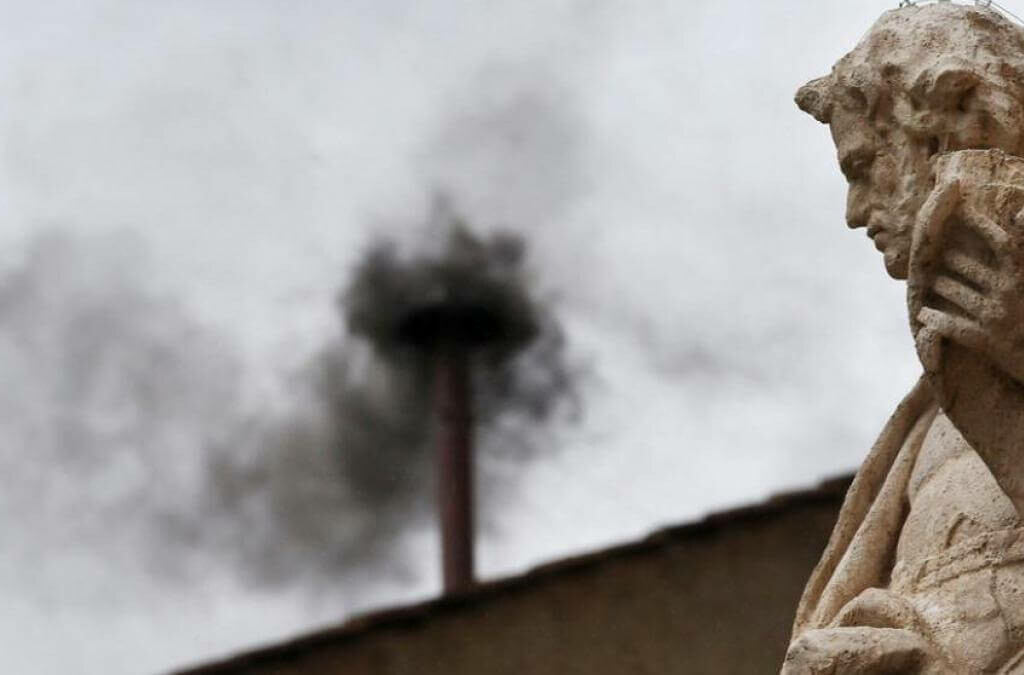The process of electing a new Pope, known as the Conclave, is steeped in tradition, symbolism and meticulous procedures that have evolved over centuries. One of the most iconic moments of this ceremony is the appearance of the white or black smoke signals, announcing the result of the voting.
The Mystery Behind the Smoke Signals: Chemical Formula Revealed
For the first time in history, the Vatican publicly disclosed the chemical formula used to create the famous smoke signals.
This revelation marked a significant step toward transparency in a ritual shrouded in mystery. For the white smoke, which signals the election of a new Pope, a mixture of potassium chlorate, lactose and rosin was used. The potassium chlorate acted as an oxidizing agent, while the easily combustible lactose provided the necessary fuel. The rosin, a natural resin obtained from yellow pine, completed the mix, ensuring a dense and brilliant smoke.
In contrast, the black smoke, indicating that the voting had not reached a consensus, was produced using potassium perchlorate, anthracene and sulfur. Anthracene, a component of coal tar and sulfur contributed to the characteristic dark smoke. This modern combination replaced older methods that used coal or tar for black smoke and fine straw for white smoke.
However, the process was not solely chemical. An electronic device in the auxiliary stove activated cartridges containing these mixtures, ensuring a controlled combustion lasting approximately seven minutes. This mechanism guaranteed that the smoke was clearly visible to the faithful gathered in St. Peter’s Square.
The Logistics Behind the Sistine Chapel Stoves
The Sistine Chapel, the epicenter of the Conclave, housed two stoves designed to produce the smoke signals. The first, a traditional cast-iron structure used since 1939, served to burn the voting ballots. The second, an auxiliary stove equipped with modern technology, ensured the visibility of the smoke.
Both stoves were connected to a 15-meter-tall internal chimney, with an external portion, visible from the square, extending two meters above the roof. To improve smoke flow, the duct was preheated using electric resistors and an exhaust fan facilitated its ascent. This blend of tradition and innovation ensured that the smoke signals were distinctly visible, even under adverse weather conditions.
The symbolism of the smoke was not always as sophisticated. In earlier times, the color of the smoke was achieved through rudimentary methods. However, modernizing the ritual enhanced precision, allowing the entire world to correctly interpret the signals emanating from the Vatican.
Preparations for the Conclave: Vestments and Lodging
The process of electing a new Pontiff required meticulous planning, covering everything from the crafting of vestments to the lodging of cardinals. The Gammarelli tailoring house, with over two centuries of history, was responsible for preparing the cassocks the new Pope would wear. These cassocks, made in three sizes (small, medium and large), ensured that any chosen individual could dress appropriately for their first public appearance.
Each outfit included a white sash with golden fringes and a pair of red leather shoes, symbolizing papal authority. Additionally, the new Pontiff wore a red velvet cape while blessing the faithful from the central balcony of St. Peter’s Basilica.
Meanwhile, the cardinals were housed in the Santa Marta residence, a modern building within the Vatican. Although austere, this lodging provided comfort, especially for older members. With marble floors, period furnishings and religious décor, the environment offered an ideal space for reflection and deliberation.
The Isolation and Solemnity of the Conclave
During the Conclave, the cardinals lived under strict isolation rules. The Apostolic Constitution Universi Dominici Gregis, promulgated by John Paul II, stipulated that electors must refrain from any external communication. Televisions, phones and radios were removed from the residence to ensure confidentiality in the process.
Auxiliary staff, including cooks, cleaners and doctors, were also required to take an oath of absolute secrecy. This commitment, renewed at each Conclave, underscored the solemnity of the event. Even the cooks were sworn to silence about the most trivial details.
Once a new Pope was elected, they were asked if they accepted the position. Upon acceptance, they were taken to the Room of Tears, where they donned one of the prepared cassocks. This room, laden with symbolism, was so named because, according to tradition, newly elected Popes often wept upon assuming the immense responsibility of leading the Catholic Church.
The Legacy of Papal Traditions
Every detail of the Conclave reflects centuries of history, faith and evolution. From the chemical formulas that light up the sky with white or black smoke to the carefully crafted cassocks and the isolation rules, each element underscores the importance of this ritual.
This event not only captures the attention of millions of faithful worldwide but also symbolizes the continuity of a millennia-old institution. The smoke signals, with their blend of tradition and modernity, remain the visible emblem of one of the most solemn and significant processes of the Catholic Church.
Sources and Recommended Reading:





